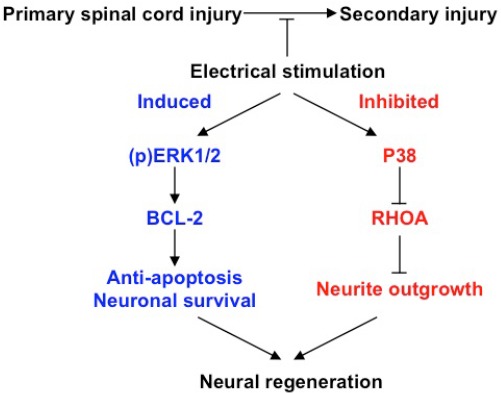Figure 5.

A molecular mechanism for improving neural regeneration in spinal cord injuries (SCI) through the use of electrical stimulation (ES).
In the absence of treatment, primary SCI can progressively lead to the development of secondary injuries. ES treatment improves neural growth, differentiation, and regeneration through the induced and inhibited expression of specific molecular pathways. In the induced pathway, ES increases the expression of ERK1/2 and the phosphorylation (p) of ERK1/2, which in turn upregulates the expression of the anti-apoptotic protein BCL-2, thus preventing apoptosis and prompting neuronal cell survival. Conversely, in the inhibited pathway, ES upregulates the expression of P38, which in turn downregulates the expression of RhoA, preventing neurite outgrowth and improving neuronal differentiation. The induced and inhibited pathways together lead to the promotion of neuronal regeneration.
